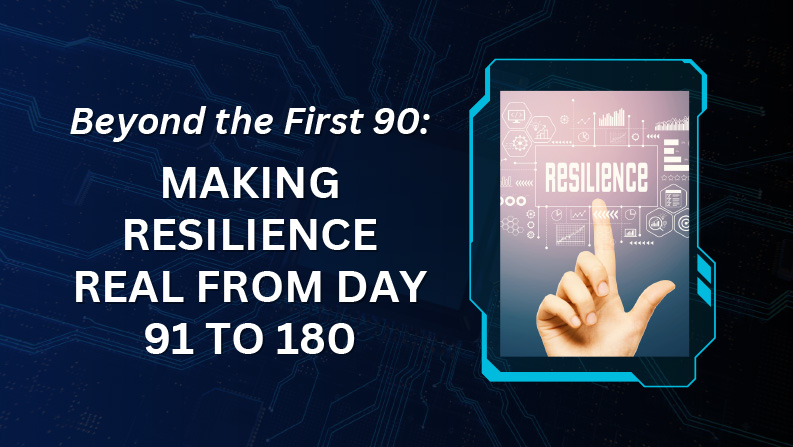The first 90 days give you visibility and a starting point.
But real resilience kicks in during the next 90, when fallback plans are tested, gaps are exposed, and routines are built.
This isn’t about starting over. It’s about moving forward with clarity.
Here’s what that looks like from Day 91 to Day 180.
Phase 1: Pressure-Test and Prove It (Days 91–120)
Schedule Your First Full Tabletop Drill
Pick a real-world scenario: ransomware, ERP outage, or third-party service failure.
Simulate it with your cross-functional team.
Walk through:
- Who identifies the problem?
- Who communicates internally and externally?
- How long does recovery take?
Key Insight: If the team is unclear—fix it now, not later.
Document Gaps in Real Time
During the drill:
- Log missing roles, delayed decisions, or communication failures.
- Note systems that didn’t work as expected.
- Prioritize fixes in the same session.
Action Step: Turn your drill output into a 30-day action plan.
Reinforce Ownership
After the drill, revalidate your fallback owners and update your role map.
Ownership isn’t static. People change. So should your plan.
Phase 2: Build the Rhythm (Days 121–150)
Refresh and Retest
Your drill should lead to:
- A shorter, sharper fallback playbook
- Updates to system documentation
- Revised escalation and response roles
Then schedule your second drill—this time with new participants and a surprise scenario.
Automate and Delegate
- Set recurring calendar invites for backup checks and ownership reviews
- Automate fallback alerts for critical systems
- Build a “Resilience Check-In” every quarter
These moves remove dependency on memory—and build reliability into process.
Publish Your Operational Scorecard
Use a simple Red/Yellow/Green scale:
- Green: Drill-tested and documented
- Yellow: Ownership clear but untested
- Red: No plan or fallback defined
Make it visible. If it’s not tracked, it won’t improve.
Phase 3: Sustain the Habit (Days 151–180)
By now, you’re not writing a resilience plan.
You’re running one.
Here’s how to keep it alive:
- Promote success stories—who acted fast, who closed gaps
- Retire or revise outdated documentation
- Confirm that your fallback plans are visible and usable by those who need them
This phase is where the team shifts from knowing to owning.
Final Word
If the first 90 days gave you structure, the next 90 test whether it works.
Most businesses stall here. They feel “done” after the initial plan.
But real resilience isn’t built once—it’s practiced, pressure-tested, and improved.
If you haven’t run a second drill…
If ownership hasn’t been reconfirmed…
If fallback steps still live in a spreadsheet…
You’re not ready.
👉 [Download the full 90-Day Playbook]
👉 Schedule a Complimentary Risk Review
👉 Get Started: https://huntleigh.com/making-resilience-real-from-day-91-to-180





